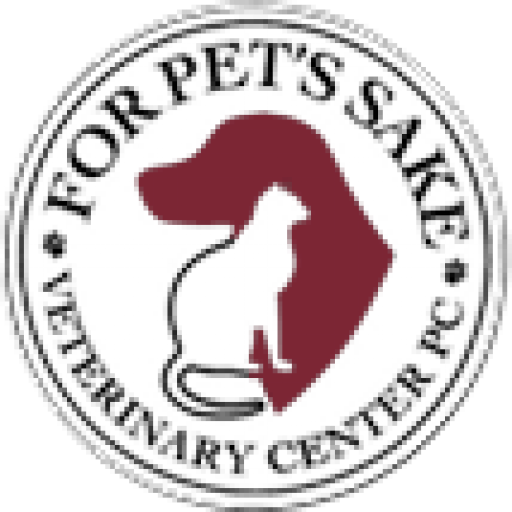
VETERINARY CENTER

VETERINARY CENTER
(Infectious tracheobronchitis)
Infectious tracheobronchitis results from inflammation of the upper airways. What is kennel cough? It is a mild, self-limiting disease but may progress to fatal bronchopneumonia in puppies or to chronic bronchitis in debilitated adult or aged dogs. The illness spreads rapidly among susceptible dogs housed in close confinement (eg, veterinary hospitals or kennels).
Etiology:
Canine parainfluenza virus, canine adenovirus 2 (CAV-2), or canine distemper virus can be the primary or sole pathogen involved. Canine reoviruses (types 1, 2, and 3), canine herpesvirus, and canine adenovirus 1 (CAV-1) are of questionable significance in this syndrome. Bordetellabronchiseptica may act as a primary pathogen, especially in dogs <6 mo old; however, it and other bacteria (usually gram-negative organisms such as Pseudomonassp , Escherichiacoli , and Klebsiellapneumoniae ) may cause secondary infections after viral injury to the respiratory tract. Concurrent infections with several of these agents are common. The role of Mycoplasmasp has not been clearly established. Stress and extremes of ventilation, temperature, and humidity apparently increase susceptibility to, and severity of, the disease.
Clinical Findings:
The prominent clinical sign is paroxysms of harsh, dry coughing, which may be followed by retching and gagging. The cough is easily induced by gentle palpation of the larynx or trachea. Affected dogs demonstrate few if any additional clinical signs except for partial anorexia. Body temperature and WBC counts usually remain normal. Development of more severe signs, including fever, purulent nasal discharge, depression, anorexia, and a productive cough, especially in puppies, indicates a complicating systemic infection such as distemper or bronchopneumonia. Stress, particularly due to adverse environmental conditions and improper nutrition, may contribute to a relapse during convalescence.
Diagnosis:
Tracheobronchitis should be suspected whenever the characteristic cough suddenly develops 5-10 days after exposure to other susceptible or affected dogs. Severity usually diminishes during the first 5 days, but the disease persists for 10-20 days. Tracheal trauma secondary to intubation may produce a similar but generally less severe syndrome.
Treatment:
Preferably, affected dogs should not be hospitalized because the disease is usually highly contagious (and also self-limiting). Appropriate management practices, including good nutrition, hygiene, and nursing care, as well as correction of predisposing environmental factors, hasten recovery. Cough suppressants containing codeine derivatives, such as hydrocodone (0.25 mg/kg, PO, bid-qid) or butorphanol (0.05-0.1 mg/kg, PO or SC, bid-qid), should be used only as needed to control persistent nonproductive coughing. Antibiotics are usually not needed except in severe chronic cases; cephalosporins, quinolones, chloramphenicol, and tetracycline are preferable because they reach effective concentrations in the tracheobronchial mucosa. When needed, the antibiotic should be selected by culture and sensitivity tests of specimens collected by transtracheal aspiration or bronchoscopy. Antibiotics given PO or IM may not significantly reduce the numbers of Bbronchiseptica in the distal trachea or major bronchi. Thus, in severely affected dogs that are not responsive to parenteral antibiotics, kanamycin sulfate (250 mg) or gentamicin sulfate (50 mg) diluted in 3 mL of saline may be administered by aerosolization bid for 3 days. Aerosolization treatment should be preceded by administration of bronchodilators. Endotracheal injection of antibiotics (eg, gentamicin) is a possible alternative to aerosolization. Corticosteroids may help alleviate clinical signs but should be used concurrently with an antibacterial agent; they are contraindicated in severely ill, coughing dogs.
Prevention:
Dogs should be immunized with modified live virus vaccines against distemper, parainfluenza, and CAV-2, which also provides protection against CAV-1. Commercial products frequently combine these agents and may include modified live parvovirus and leptospiral antigens. An initial vaccination should be given at 6-8 wk and repeated twice at 3- to 4-wk intervals until the dog is 14-16 wk old. Revaccination should be performed annually. When the risk of Bbronchiseptica infection is significant, use of a live, avirulent, intranasal vaccine is preferable to parenteral products containing inactivated bacteria or bacterial extracts. A combination of an avirulent Bbronchiseptica and a modified live parainfluenza vaccine is available for intranasal use. One inoculation is administered to puppies >3 wk old.
This information was obtained from the Merck Veterinary Manual Website at: http://www.merckvetmanual.com/mvm/index.jsp?cfile=htm/bc/121619.htm
© 2008; Merck & Co., Inc.Whitehouse Station, NJ USA. All Rights Reserved.
Published in educational partnership with Merial Ltd.